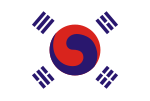Dragon Hill Lodge
Armed Forces Recreation CentersHotel buildings completed in 1990Hotels established in 1990Hotels in South KoreaMilitary installations of the United States in South Korea ... and 1 more
Yongsan District
Dragon Hill Lodge is a U.S. Department of Defense - owned hotel in Seoul, South Korea. It is co-located with and is a part of the Yongsan Garrison (which means "Dragon Mountain" in Korean) military community. The Lodge is an Armed Forces Recreation Center (AFRC) resort hotel and serves thousands of guests each year, all of whom are required to be active or retired military, DOD employees, or their family members. The Lodge was built completely with soldier-dollars with no congressional funding support. Rates are determined by the rank of the guest as well as the guest's reason for visiting. Guests traveling on business are charged a higher rate.
Excerpt from the Wikipedia article Dragon Hill Lodge (License: CC BY-SA 3.0, Authors).Dragon Hill Lodge
Hartell Rd, Seoul Hangangno-dong
Geographical coordinates (GPS) Address External links Nearby Places Show on map
Geographical coordinates (GPS)
| Latitude | Longitude |
|---|---|
| N 37.531833 ° | E 126.981553 ° |
Address
드래곤 힐 로지
Hartell Rd
04382 Seoul, Hangangno-dong
South Korea
Open on Google Maps








